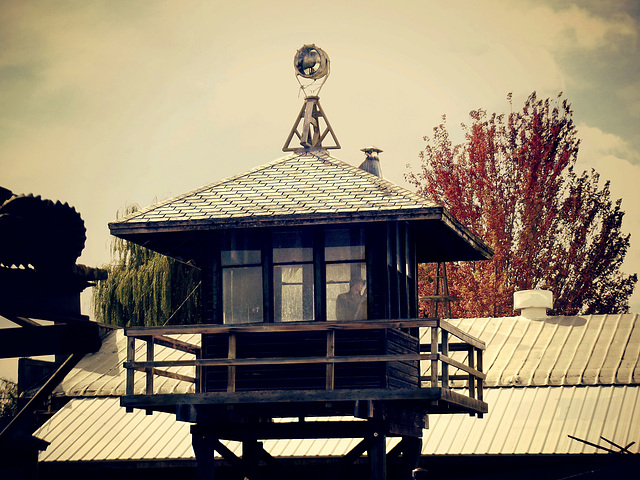History
Remnants of Camp Tulelake, northern site.
Camp Tulelake building
Camp Tulelake, northern site
Lone building, Newell site of Camp Tulelake
Castle Rock on "The Peninsula"
Farm in the desert
Tule Lake National Wildlife Refuge
Window to the sky
Autumn tapestry
Colors falling
Shed
Claws
Night train
El loco
Stasis
Diamond
Watchman
GMC at rest
Potato truck, retired
Potato trucks
Farm Ford
Southern Pacific crane
Memory collage
Barracks sign
Barracks
The orange house
Golden light
Keno Bridge
Going to the beer section
Little customer
Keno Store
Used cars
Woodbine in autumn
Repair I
Repair II
Gate
Witch's treadmill
Ready for Halloween
Trick or treat!
Police
The violet prison
Glacier
Lava
The King of Halloween
Location
Lat, Lng:
You can copy the above to your favourite mapping app.
Address: unknown
You can copy the above to your favourite mapping app.
Address: unknown
See also...
Keywords
Authorizations, license
-
Visible by: Everyone -
All rights reserved
-
777 visits
Guard tower


From the Japanese-American Segregation Camp of WWII, Tulelake, California. It was used at the high-security Newell location. This tower was moved to the City of Tulelake Museum to preserve it. There were actually two separate camps, one near Tulelake and another at Newell, a few miles south. The Newell camp became the largest Japanese-American internment camp in the USA. Read about it here: en.wikipedia.org/wiki/Tulelake_camp
aNNa schramm, Christina Sonnenschein, kiiti and 2 other people have particularly liked this photo
- Keyboard shortcuts:
Jump to top
RSS feed- Latest comments - Subscribe to the comment feeds of this photo
- ipernity © 2007-2025
- Help & Contact
|
Club news
|
About ipernity
|
History |
ipernity Club & Prices |
Guide of good conduct
Donate | Group guidelines | Privacy policy | Terms of use | Statutes | In memoria -
Facebook
X

Diane Putnam club has replied to Don Barrett (aka DBs… clubDon Barrett (aka DBs… club has replied to Diane Putnam clubDiane Putnam club has replied to Don Barrett (aka DBs… clubvery-to-ultra-conservative. As for Newell, CA, as opposed to the Tulelake site against the buttes, I think it still carries the extreme stigma of being the most hard-core of all of them. That's where they sent people most likely (so they thought) to be traitors, those who had already communicated with Japanese military or government, or who were common criminals, drifters or trouble-makers in other ways. There were riots, work strikes, food shortages and just general unrest at the Newell camp. Pretty interesting and unique among the camps. There were families with children there, too, so this would have been awful for them to be around. I read that when released, the Japanese-Americans kept it a secret where they had been because of the shame of being in the Newell camp, especially.
For those reasons, it's even more important, I think, to have a more educational experience at Newell. But, there's no money for it.
Don Barrett (aka DBs… club has replied to Diane Putnam clubSign-in to write a comment.